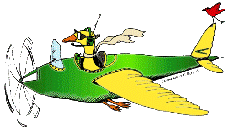Bird Strike Committee Proceedings
Date of this Version
10-24-2002
Document Type
Article
Abstract
Successful operation of the FAA’s Low-Level Windshear Alert System (LLWAS) depends largely on birds not perching on the wind-sensing units which are installed atop poles 40-45 m tall. Because new LLWAS units will be erected at airports throughout North America, anti- perching devices must deter numerous avian species ranging widely in body size and behavioral pattern. To determine the most promising devices, we conducted pen trials with brown-headed cowbirds, fish crows, barred owls, great horned-owls and black vultures. Birds were given free access to an unmodified sensor unit mounted on a tripod for 24 hours, during which the only alternative perch was a tree branch at ground level. This was followed by 24 h with a perching deterrent installed on the sensor unit. Trials were video-taped 10 hours daily and the sensors were connected to a computer so that failures in acquisition of wind data due to perching activity were continuously recorded. Smaller birds (cowbirds, crows) tended to perch on the 3 arms of the sensor units and were mostly deterred by “Bird Spinners”, metal bushings slipped onto the sensor arms that turned freely and prevented the birds from obtaining a stable perch. Owls and vultures were not affected by “Bird Spinners”, but “AgSpikes” (sharp, stout spikes emanating from a central base) reduced perching 95-98%. With the “AgSpikes” or “AgCone” (a smooth, solid aluminum cone) installed, owls and vultures attempted to perch but departed when they were not able to obtain a comfortable, stable grip. Commercial bird spikes and a monofilament web attached to the sensor arms were each ineffective regardless of species. It appears that a single perch deterrent device will not suffice for all birds, but a combination of “Bird Spinners” with “AgSpikes” or “AgCone” should be appropriate for most situations. Verification of these findings with field testing is needed.


